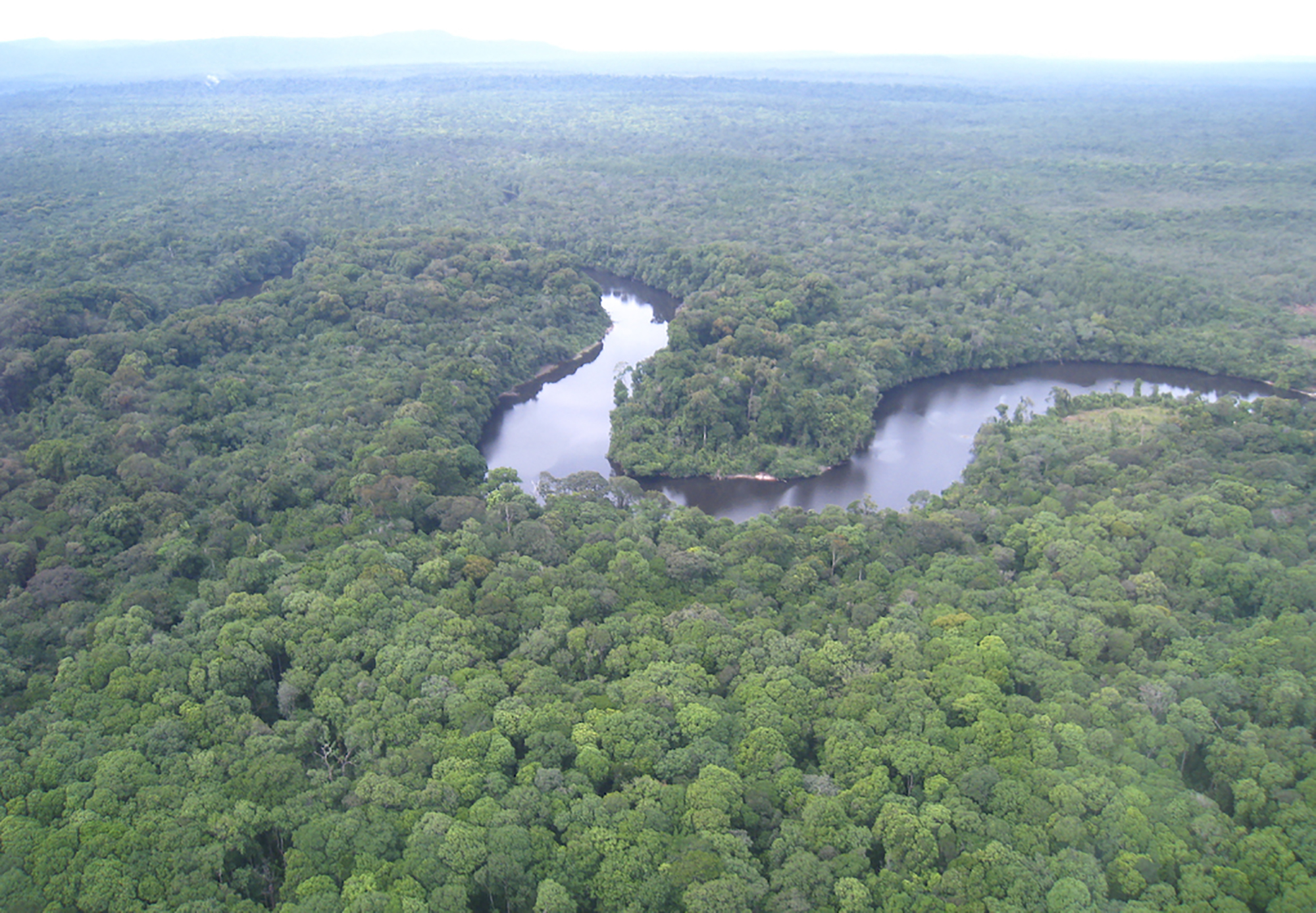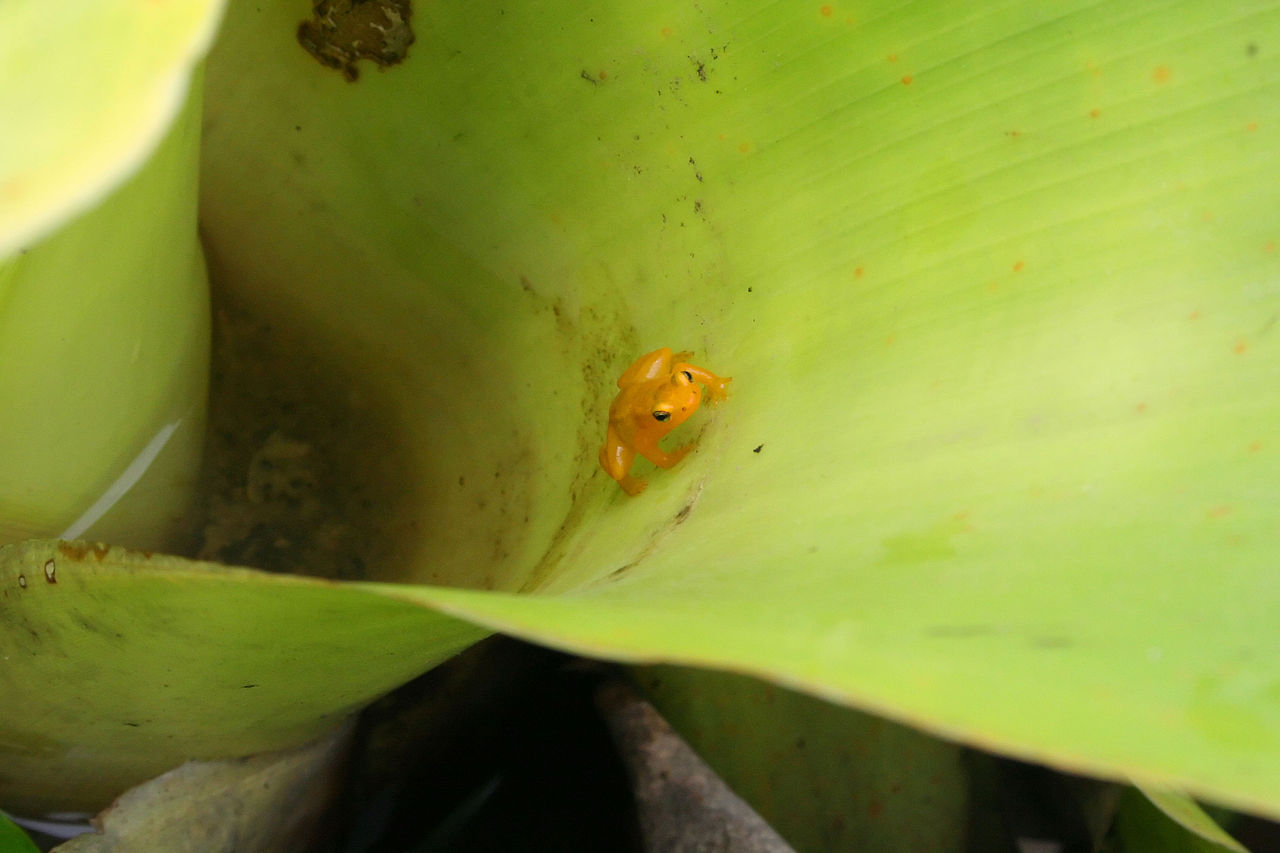Travelling into the heart of the South American jungle on the single dirt road that transects Guyana, our driver pulled to a stop. Thirty metres in front of us lay a female jaguar, sunning herself on the road after a tropical rain. Staring at us, fearless, she got to her feet langorously, stretched, and ambled off into the dark forest.
It was just one of countless wild encounters I had on two trips to Guyana several years ago: giant anteaters strolling the savannahs; harpy eagles with Mohawk feathers ruffling; a piranha jumping into my boat; huge caimans, hunting capybaras who came down to the river to drink. I had the good fortune to see these wonders and many more, thanks to my Amerindian hosts who know these lands and animals intimately and guided jungle hikes and river trips.
This forest ecosystem remains due to Guyana’s small population, and the country has sought to keep it that way with national and international programmes and commitments. The nation has laid out an alternative route that would avoid traditional development – driven by fossil fuels and natural resource exploitation – through a UN programme known as REDD+ (reducing emissions from deforestation and forest degradation plus conservation and sustainable management).
Guyana started on this alternative development path almost a decade ago. Today, much of the forest remains standing. But the seemingly simple promise of payments for forest conservation by REDD+ has been complicated by shifting politics, inadequate attention to indigenous peoples’ rights, international aid bureaucracy, and global market forces hungry for gold and tropical hardwood.

Guyana retains much of its original forests (darker turquoise), despite threats from mining, agriculture, and other activities. Ecotourism developed in Guyana centres around birding, with hospitality and guiding by indigenous people, such as in Kaieteur National Park, Iwokrama Forest, and many other sites. The world-renowned Iwokrama International Centre is home to research, ecotourism, and education efforts in partnership with local indigenous people and others. Illustration: E. Wikander/Azote.
A special place
This country on the northern edge of South America is about 75% forested – in part, because 90% of its 770,000 people live near the coast. Guyana’s interior, accessible only by rivers, bush planes, and that one main dirt road to Brazil, is covered by rainforest and savannah. Numerous Amerindian groups call this land home, including the Makushi, Wapishana, Waiwai, and Patamona peoples.
Guyana wants to develop but is also cautious of losing what makes it special. In 2009, then-president Bharrat Jagdeo pushed for a radical idea that had been discussed at the 2007 COP in Bali: payments for conservation. With countries such as Brazil and Indonesia receiving payments under the original UN REDD programme for halting logging, he asked, why should Guyana be excluded because it has been a good steward of its forests?
With the consultancy firm McKinsey and Company, Jagdeo developed an “economically rational baseline” for international payments: US$580 million annually over 25 years. The premise: if Guyana followed the standard development path – logging its forests, then turning to agriculture – how much would it earn? If the global community wanted Guyana to maintain its forests as a critical carbon sink and treasure vault of biodiversity, then it should pay what the country could otherwise earn.
…why should Guyana be excluded because it has been a good steward of its forests?
To reassure the world that money for Guyana would be well spent, Jagdeo’s plan centred on a “Low Carbon Development Strategy” that would see the country invest in organic agriculture, sustainable forestry, business outsourcing, ecotourism, and other relatively low-carbon forms of development. The plan also included building hydropower – which would require clearing some forested lands – to cut fossil fuel use. In 2009, Norway stepped up with a commitment to support forest conservation and reducing greenhouse-gas emissions in Guyana, offering up to $250 million by 2015.
Some criticised Jagdeo for “blackmailing” the world. But, after much negotiation, in 2010 at COP-16 in Cancun, the world agreed that developing countries should receive financial payments not just for reducing deforestation but also for conserving forests, managing them sustainably, and enhancing forest carbon stocks, a policy called REDD+.
Since then, Guyana has continued to work towards its low-carbon future and the first country-wide REDD+ implementation. And despite the threats, forest cover in Guyana remains high. “They have one of the largest forest covers in the world and an extremely low deforestation rate: 10 to 15 times lower than their neighbouring countries”, says Hege Ragnhildstveit, senior adviser for Norway’s International Climate and Forest Initiative. This seeming success, however, obscures the challenges Guyana is weathering to maintain its forests.
This land is Amerindian land
Unsettled indigenous land rights have been a critical stumbling block in implementing conservation programs that would require local peoples’ informed consent and payments to them for forest conservation services. Amerindian people in Guyana number about 50,000, about 7% of the total population, and about 90% of Amerindians live in the interior, where most of the forest lies. Many groups have title rights to their land – but often only to their villages and not to individual homesteads beyond that border or to the wider customary lands they use for hunting and foraging.
The Amerindian titled lands that are recognised make up about 14% of Guyana’s territory. But even titled lands are not always respected. A study by the indigenous advocacy organisation Amerindian Peoples Association Guyana (known as APA) found that more than 30% of titled villages and 80% untitled customary lands had government-granted mining concessions, while 34% of titled and 79% of untitled lands had logging concessions – often without free, prior, and informed consent from indigenous peoples, as required by international law. Indigenous groups today are pushing the national government to recognise those wider land rights and to comply with international human rights law.
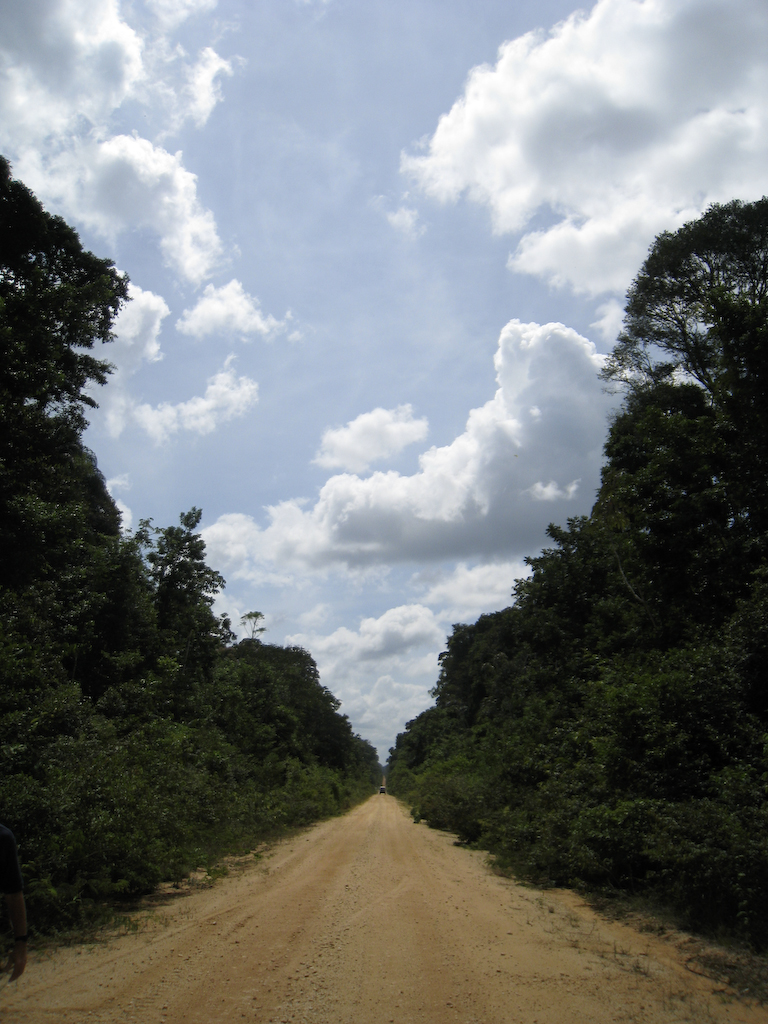
Guyana has one main road (shown here) between the capital, Georgetown, and Lethem, on the Brazilian border. Most travel in the interior requires a bush plane or a boat. Photo: Erica Gies.
Under the Guyana-Norway agreement, indigenous villages were given the choice to “opt in” to participation in conservation and payments for those services. Three of the villages I visited on my ecotourism jaunts – Surama, Rewa, and Annai – were keen to opt in, according to David Singh, executive director of Conservation International Guyana. “Annai has measured their carbon,” Singh says. “They have calculated how much money they can get for their forest.”
The opt-in document was only finalised this summer. Such bureaucratic delays prevented Annai and other nearby communities from getting credit for several projects they’ve done, says Mike Williams, who is Makushi and a former toshao (village leader) of Annai. He is now vice chair of the North Rupununi District Development Board (NRDDB), a non-profit organisation that represents 20 indigenous communities.
Some indigenous people might view the REDD+ projects as limiting, Williams says. “When you opt in, there is committee monitoring and verification of how you hunt, fish, do farming, do logging.” But he welcomes such supervision, saying, “Now nobody is monitoring anything and a lot of overharvesting is occurring.”
In the Upper Takutu-Upper Essequibo (Region 9), the North Rupununi is a mix of savannah, seasonal wetlands, and rainforest, and the government is planning industrial agriculture on the savannah grasslands. The NRDDB objects to this plan, says Williams, because the proposed land lies adjacent to their titled villages and in the headwaters of the Rupununi River, an area that floods during the wet season. “The farmers will use insecticides and pesticides, and it will affect the fishes, the mammals, the birds”, says Williams, “and of course, our livelihood depends on the water, fishes, mammals, birds”.
Doing this kind of development in “the hinterlands” is ill conceived, says Williams. “Everyone knows the savannahs are not rich [soils].” A better place for agriculture, he says, would be along the coast, where land has proved its productivity over centuries of growing sugar. Instead, today, those areas are being developed for housing, he says. They are also at risk of flooding and inundation from sea-level rise.
At a meeting a few months ago at the Annai benab, a traditional open-air structure made of local materials for community meetings and events, Williams says that he told representatives from the International Development Bank, “We want protection for the North Rupununi wetlands, and we do not want any more large-scale agricultural land to be given away.” He is hopeful that the major development donor has heard these concerns, as they have started consulting with indigenous peoples before funding projects affecting their lands.
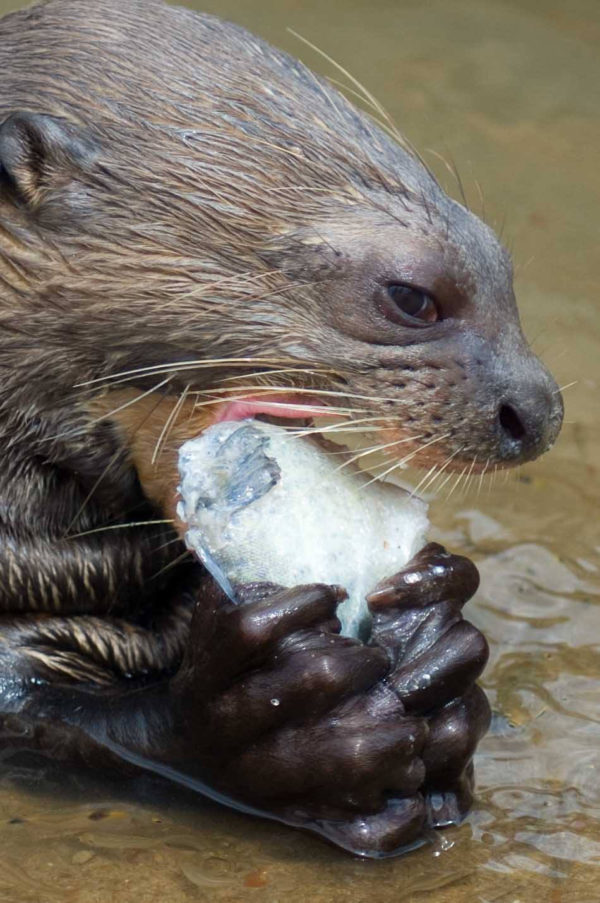
This semi-tame young giant river otter eats a chunk of fish in the river near Karanambu, a former ranch turned ecotourism centre in North Rupununi, Guyana’s southwest interior. Photo: Erica Gies.
Government shift
A national election in 2015 led to a change in governing party. As priorities shifted, President David Granger replaced the Low Carbon Development Strategy with his own Green State Development Strategy.
The new strategy could be a positive development, says Ragnhildstveit, noting that it incorporates Guyana’s commitments in the Paris agreement on climate change and UN Sustainable Development Goals. Nevertheless, the political change has slowed momentum as the new government decides how it wants to move forward.
One key difference in the two development approaches lies in how to transition to nearly 100% renewable energy by 2025, says Per Pharo, special envoy for Norway’s International Climate and Forest Initiative. This transition was part of the memorandum of understanding Guyana signed with Norway in 2009.
Political change has slowed momentum as the new government decides how it wants to move forward.
Jagdeo’s People’s Progressive Party would have built a proposed hydropower project called Amaila Falls, says Pharo. The project’s plans site it at the confluence of the Amaila and Kuribrong rivers, about 250 kilometres (155 miles) south-west of the coastal capital, Georgetown. But the new government is distancing itself from Amaila Falls, says Pharo. “They’re claiming it’s too expensive.”
The Granger government may also be put off by the dam’s environmental and social impacts. Amaila Falls has a much smaller footprint than earlier proposed dams, but it still would flood 23 square kilometres (9 square miles) of forest and impact local Patamona indigenous communities. According to the APA website, “Several of the communities have not received any official information about the dam”. People who attended meetings held by the original project developer, Sithe Global, said that the company “focused solely on the alleged benefits of the dam and that they [the attendees] still feel unaware of how it can negatively affect them.” Sithe Global has since pulled out of the project, but feasibility studies continue.
Local people may also be unenthused because the dam would not deliver electricity to them because they are not on the grid, says Ragnhildstveit. For that, they would need “micro hydro”, a tiny dam to which a small settlement can easily connect to obtain power.
The Granger government is considering other hydropower projects, as well as solar and wind. “They’re coming around to seeing that they can’t necessarily solve Guyana’s power problems with one or two dams”, says Ragnhildstveit.
Pharo sees it a bit more darkly: the Granger government has “basically muddied the waters, so to speak, regarding their energy future. Would it be low carbon or not? We are in a waiting mode”.
Exxon Mobil recently made a major oil discovery off Guyana’s coast. Most of the oil would likely be destined for export and offers an economic opportunity, but it threatens Guyana’s carbon reduction goals. Nevertheless, Pharo acknowledges, “It would be bordering on the hypocritical if we told them not to develop their oil resources”.
Calvin Bernard, a member of the Transparency Institute of Guyana and dean of the biology department at the University of Guyana, is concerned about the oil project for environmental and governance reasons. “Having a lot of revenue coming in from oil is not necessarily good for Guyana”, says Bernard. “Our ranking in the transparency index is quite low”, he says, citing the Corruption Perceptions Index of the institute’s parent organisation, Transparency International. “We are [nearly] the worst in the English-speaking Caribbean.” Norway’s REDD+ funds hadn’t fallen into this trap in large part because they’ve been difficult to access, he says.
Bureaucratic aid
Though 2015 – the year in which Norway’s initial investment was meant to end – has come and gone, only two-thirds of Norway’s money has been dispersed. Norway has released the money through international institutions such as the World Bank, the Inter-American Development Bank, and UN agencies. These institutions “have stringent requirements that have proved difficult for Guyanese to meet”, slowing the disbursal process, says Bernard.
From Norway’s point of view, it is critical to ensure internationally accepted financial, social, and environmental safeguards. Institutions in Guyana, however, often lack a threshold amount of funds, or complex project proposals may be too arcane for many local people to deliver because of “brain drain” from the country. “There are more educated Guyanese in Toronto and New York than what you have in Guyana”, says Ragnhildstveit.
Difficulties in accessing the money have been a real frustration for Guyanese, says Dane Gobin, CEO of Iwokrama International Centre, a national protected area and scientific research facility. This deal was sold to the Guyanese as Norway paying Guyana for keeping the forest standing. “People were questioning that, ‘It’s really not the REDD+ because, if you pay me to keep the deforestation rate down, I shouldn’t have to jump through hoops’”, he says.
Bernard agrees that the reality has been much more complex than Guyanese were led to believe. “Because if you’re paying me for a service I provide, then I determine how, when, and what I use my money for. That’s clearly not the case. Someone else is determining that.”
Stakeholder meetings to discuss this problem resulted in the suggestion that Norway open its own overseas development office in Guyana. That way, funds would come directly from the Norwegian government to Guyanese organisations, rather than going through a middle entity like the World Bank.
Despite the challenges, Norway remains committed, says Ragnhildstveit. The original bilateral agreement continues, despite expiring in 2015. “Our minister met with President Granger in Marrakesh in November. They looked at a longer-term partnership”, she says.
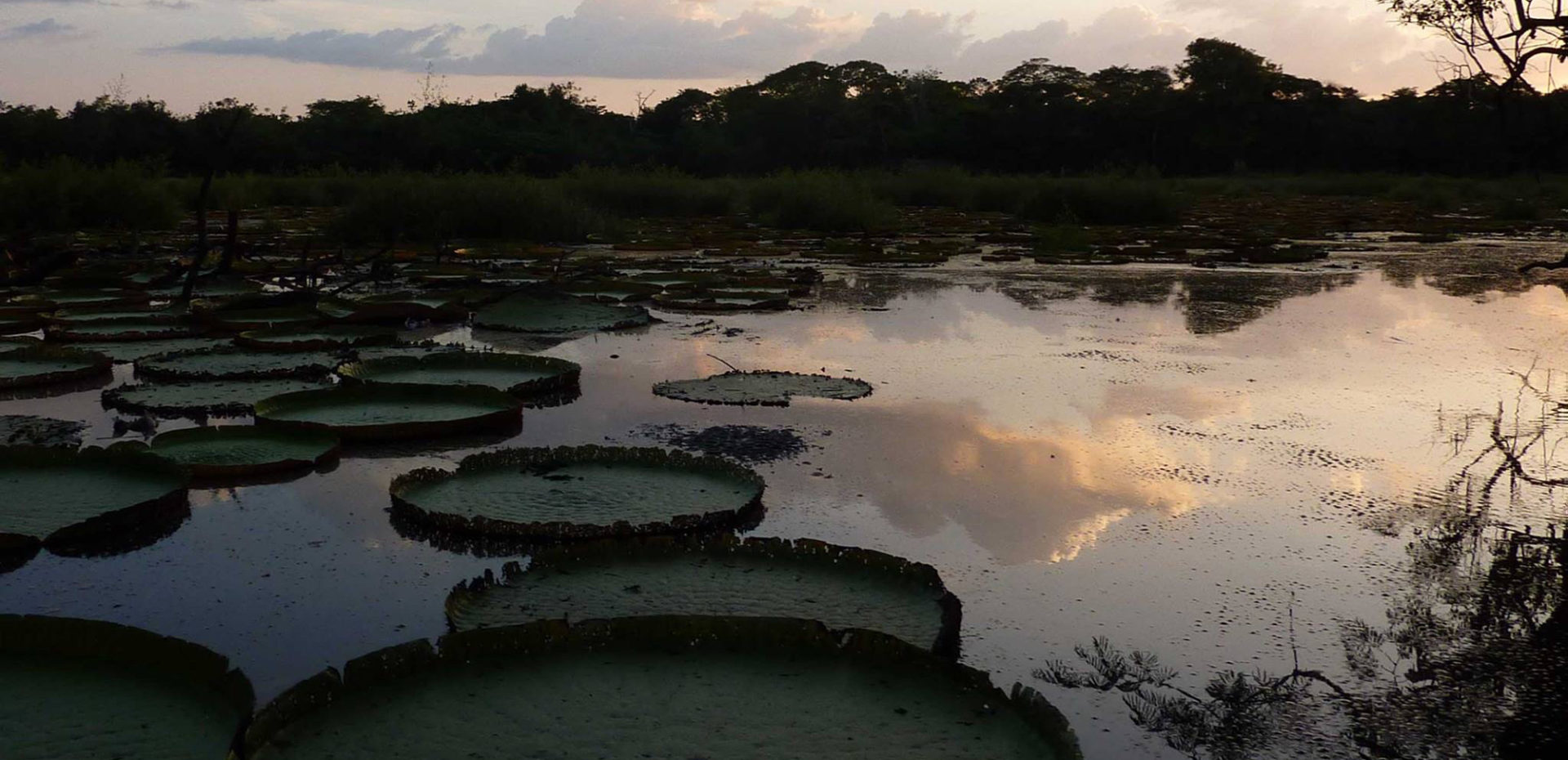
 21 MIN READ / 3429 WORDS
21 MIN READ / 3429 WORDS
